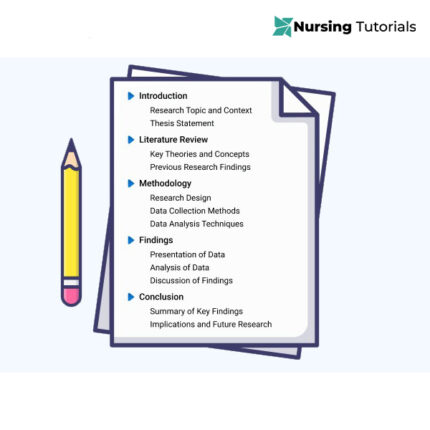Solution : Chamberlain NR507 Final EXAM Study Guide – Advanced Pathophysiology
Executive Summary
This comprehensive study guide consists of all concepts tested in the final exam. These concepts include:
- Genitourinary disorders
- Gastrointestinal disorders
- Neurobiological disorders
- Endocrine disorders
- Neurodegenerative disorders
- Demyelinating diseases
- Convulsions
- Headache syndromes
- Cranial nerve disorders
- Central nervous system inflammation
- Central nervous system ischemia
- Dermatologic conditions
- Under each concept, the guide provides the pathophysiology of the disorder, how it is assessed, and treated.
- All the questions comes from these subsections.
- Having this guide and mastering it will help you answer any form of question
$75.00 Original price was: $75.00.$30.00Current price is: $30.00.
Description
NR507 Final Exam Study Guide
Concepts:
- Genitourinary disorders
- Gastrointestinal disorders
- Neurobiological disorders
- Endocrine disorders
- Neurodegenerative disorders
- Demyelinating diseases
- Convulsions
- Headache syndromes
- Cranial nerve disorders
- Central nervous system inflammation
- Central nervous system ischemia
- Dermatologic conditions
GENITOURINARY DISORDERS
- Acute Renal Failure
- Reversible
- Prognosis- kidneys respond to diuretic with good output= kidneys are functioning well
- Acute Pyelonephritis
- Pathophysiology
- Bacterial colonization
- Adherence and invasion
- Inflammation and immune response
- Renal injury and complications (upper urinary system)
- Assessment
- Diagnosing by clinical symptoms alone can be difficult; can be similar to cystitis; pyelonephritis involves the upper tract and cystitis involves the lower tract.
- Flank pain, abdominal tenderness, and Systemic signs, such as high fever, chills, and tachycardia, may suggest severe infection.
- Diagnosis
- Urinalysis: Positive urine culture with significant bacteriuria (>10^5 CFU/mL) and the presence of pyuria (≥10 white blood cells per high-power field) on WBC casts indicates pyelonephritis, but may not always be present
- CBC: Complete blood count (CBC) elevated white blood cell count =infection.
- Imaging studies: renal ultrasound or computed tomography (CT) scan, can help identify structural abnormalities and complications like abscess formation or obstruction.
- Renal Calculi
- Pathophysiology
- Supersaturation: urine becomes oversaturate with certain substances like calcium
- Nucleation: crystals act as nucleation sites, where further crystal deposition can
- Pathophysiology
- Pathophysiology
- Crystal retention: urinary stasis or inadequate urine flow allows crystals to remain in the urinary tract
- Stone growth and composition: overtime, crystals accumulate and grow into
- Assessment
- Medical history: identify risk
- Physical exam: flank or abdominal pain; costovertebral angle (CVA) tenderness; hematuria
- Imaging studies: crucial for assessing the presence, size, location and composition of the stones- CT scan, renal ultrasound or x-ray
- Lab tests: urinalysis (blood, crystals or infection); blood tests evaluate renal function and identify metabolic abnormalities
- Treatment
- Conservative treatment: for stones <5 mm that are asymptomatic or causing mild symptoms
- Medical management: thiazide diuretics or allopurinol can be used for calcium stones or uric acid stones, respectively
- Stone removal: larger stones >5 mm or stones causing severe symptoms-
- The goals of treatment:
- Manage acute pain
- Promote passage of stone
- Reduce the size of stone already formed
- Prevent new stone formation
- Chronic Renal Failure
- Review who is a candidate for dialysis
- Chronic kidney disease (CKD) is the progressive loss of renal function associated with systemic diseases such as hypertension, diabetes mellitus (most significant risk factor) systemic lupus erythematosus, or intrinsic kidney disease
- CKD stage is determined by estimates of GFR and
- Review 5 stages of CKD
|
Stage |
Description |
eGFR
(mL/min) |
Complications of Decreased GFR |
|
| 1 | There is kidney damage with normal or elevated | 90-120 | • Anemia | |
| GFR | • Hypertension | |||
| • Decreased calcium absorption | ||||
| • Hyperlipidemia
• Heart failure • Left ventricular hypertrophy |
||||
| 2 | There is kidney damage with mild decrease in GFR | 60-89 | ||
| • Fluid volume overload | ||||
| 3 | There is a moderate decrease in GFR | 30-59 | ||
| • Hyperkalemia |
|
Stage |
Description |
eGFR
(mL/min) |
Complications of Decreased GFR |
| 4 | There is a severe decrease in GFR | 15-29 | |
| • Hyperparathyroidism
• Hyperphosphatemia • Metabolic acidosis |
|||
| 5 | Kidney failure- End-stage renal disease | <15
(dialysis) |
|
| • Malnutrition (late complication) |
- Once Stage IV is reached, progression to Stage V is inevitable as well as dialysis or kidney
- Candidates for Dialysis
- Based on symptoms, kidney function, overall health status and individual circumstances
- Symptomatic uremia
- Fluid overload and hypertension
- Hyperkalemia
- Acid/base imbalances
- Progressive loss of kidney function
GASTROINTESTINAL DISORDERS
- GERD
- Warning signs of GERD include: Symptoms over the age of 50:
- Dysphagia (difficulty with swallowing food)
- Odynophagia (pain on swallowing)
- Nausea and vomiting
- Weight loss
- Melena
- Early satiety (feeling full after eating very little food).
- Pathophysiology
- Lower esophageal sphincter (LES) dysfunction: reduced pressure or improper relaxation allows gastric acide to flow back into the esophagus
- Hiatal hernia: contributes to GERD by disrupting the normal barrier between the esophagus and stomach
- Esophageal motility disorders: impaired esophageal peristalsis and reduces esophageal clearance can lead to pooling of gastric acid in the esophagus
- Acidic acid contents: Gastric acid, bile acids, and pepsin are the major components of the gastric contents that reflux into the These substances can cause direct.
mucosal damage and trigger inflammation, leading to the characteristic symptoms of GERD.
- Assessment
- Subjective: Patients often report symptoms such as heartburn (burning sensation in the chest), regurgitation (acidic taste in the mouth), dysphagia (difficulty swallowing), and chest pain, which may mimic cardiac chest pain.
- Objective: The physical examination is usually normal in uncomplicated cases of GERD, although there may be signs of esophagitis or other complications in severe cases.
- Diagnostic tests: If symptoms are severe or persistent, additional diagnostic tests may be performed, including upper gastrointestinal endoscopy, esophageal pH monitoring, and esophageal manometry.
- Diagnosis
- Clinical symptoms
- Response to empiric therapy-if pt responds to omeparozole
- Diagnostic tests
- Upper GI series
- Endoscopy
- Esophageal manometry
- Treatment
- Lifestyle modification
- Medications
- Antacids
- H2 receptor antagonists and proton pump inhibitors
- Prokinetic agents to improve esophageal motility
- Surgery
- Hiatal Hernia
- Diagnosis
- Diaphragmatic weakness
- Sliding hiatal hernia
- Contributing factors:
- Aging
- Obesity
- Pregnancy
- Increased intra-abdominal pressure (chronic coughing or Valsalva maneuver)
- Structural abnormalities of the diaphragm
- Assessment and Diagnosis
- Treat symptoms
- Diagnosis
- Upper GI Barium swallow or EGD
- Treatment
- Lifestyle modification
- Medications:
- Antacids
- Prokinetic agents
- Surgery
- Duodenal Ulcer
- Pathophysiology
- pylori
- Gastric acid hypersecretion
- Impaired mucosal defense mechanisms
- Disruption of the balance between aggressive and defensive factors
- Assessment
- Medical history
- Symptoms:
- The characteristic manifestation of a duodenal ulcer is chronic intermittent pain in the epigastric area.
- The pain begins 30 minutes to 2 hours after eating, when the stomach is
- It is not unusual for pain to occur in the middle of the night and disappear by
- Physical exam
- Diagnosis
- Upper GI endoscopy
- pylori testing
- Imaging studies
- Treatment
- Medications:
- Proton pump inhibitors and H2-receptor blockers
- Antibiotics
- Antacids and cytoprotective agents
- Lifestyle modifications
- Follow-up and monitoring
- Medications:
- Peptic Ulcer
- A peptic ulcer is a break or ulceration in the protective mucosal lining of the lower esophagus, stomach, or duodenum.
- Least likely to occur in the large intestine
- Pathophysiology
- Pathophysiology
- Aggressive factors
- pylori
- Gastric acid hypersecretion
- NSAIDS
- Lifestyle factors
- Protective mechanisms:
- Mucus and bicarbonate secretion
- Prostaglandins
- Mucosal blood flow
- Epithelial cell renewal
- Assessment and Diagnosis
- Medical History
- Symptoms
- Physical exam
- Diagnostic Testing
- Endoscopy
- pylori testing
- Imaging studies
- Treatment
- Medications:
- Proton pump inhibitors
- Antibiotics
- H2-receptor antagonists
- Cytoprotective agents
- Lifestyle modifications:
- Avoidance of NSAIDS
- Smoking cessation
- Dietary changes
- Follow-up and maintenance therapy
- Medications:
- Aggressive factors
NEUROBIOLOGICAL DISORDERS
- Major Depressive Disorder (MDD)
- Neurotransmitter imbalance:
- Serotonin
- Norepinephrine
- Dopamine
- Neurotransmitter imbalance:
“Click “Add to Cart or Buy Now” to access the entire solutio



